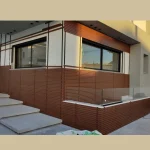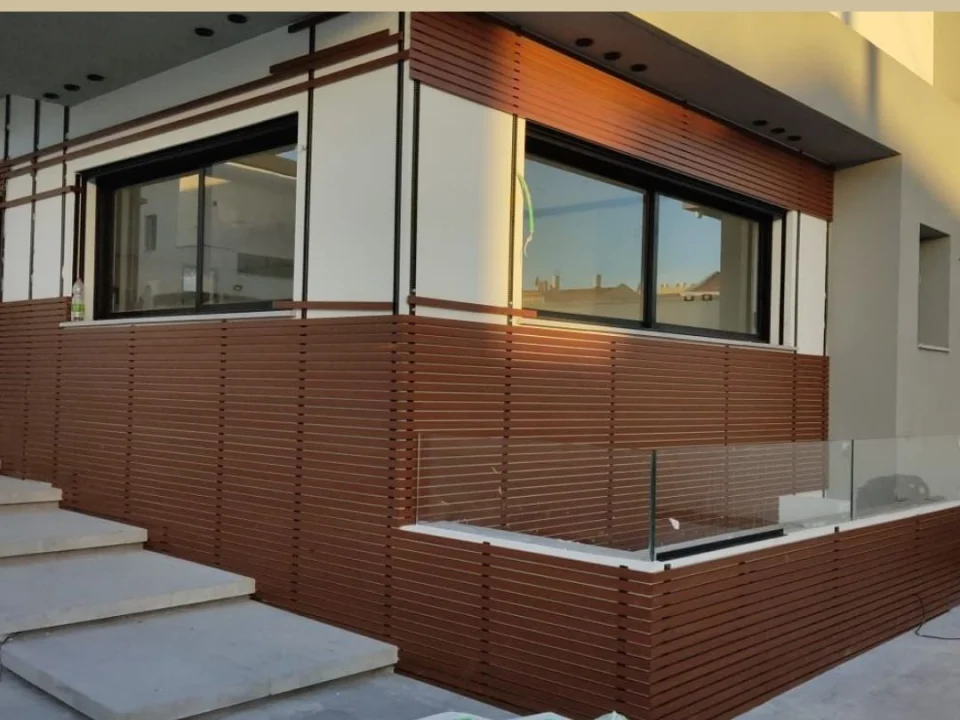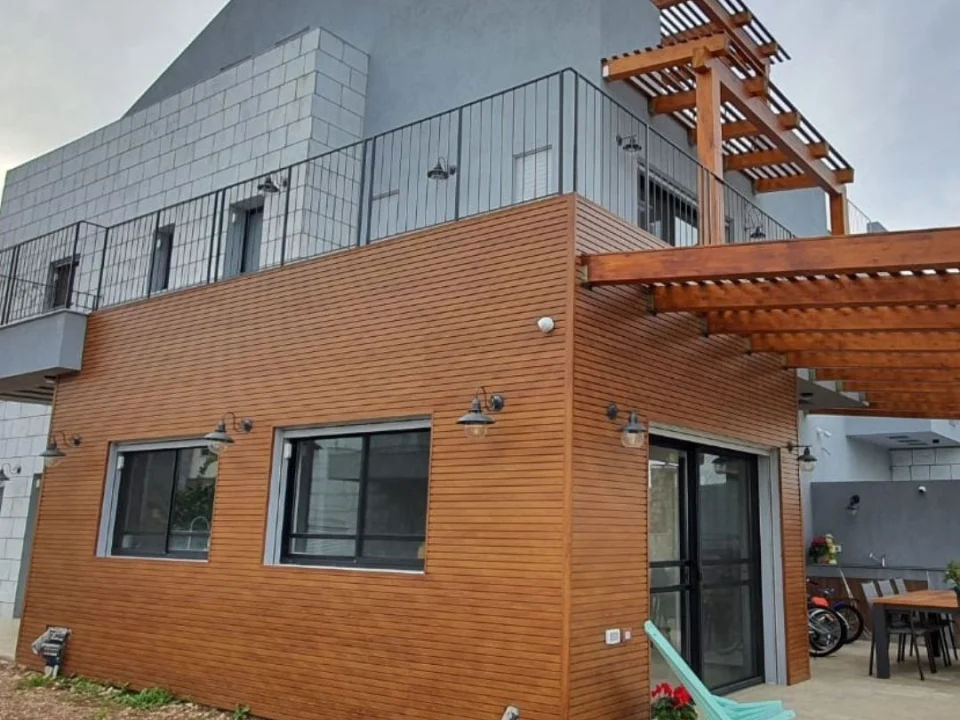
Internal Cladding: Simple Guide for Designers, Architects, Contractors, and Distributors

Recladding – A Simple Way to Refresh Any Building
Cladding changes how a building looks and performs. It is the outer skin. It protects, insulates, and styles your walls.
There are many cladding types. Some are heavy. Some are light. Some look warm like wood. Some are sleek and modern.
This guide explains the main types. We keep it simple and easy. Designers, architects, contractors, distributors, this is for you.
What is cladding?
Cladding is the material fixed to the outside of a structure. It keeps water out. It shields from heat and cold. It also makes a building look good.
Big families of cladding
Wood cladding (real timber)
Real wood gives warmth and character. It smells nice. It ages with grace. But wood needs care. Sand. Stain. Protect. Pests and moisture can damage it. The lifespan varies by wood and treatment.
Metal cladding (aluminum, steel, zinc)
Metal is tough and light. It does not rot. It resists pests. Aluminum is popular because it’s lightweight and won’t rust.
Composite panels (ACM, insulated panels)
These are sandwich panels.They combine a core and skin. They are light, insulated, and fast to install. New builds often use them.
Fiber cement, brick, stone, glass
These are heavier options. They last long but add load to the structure. They look premium but cost more in labor.
How to pick a cladding type, quick checklist
- Is weight an issue? Choose lightweight cladding panels or aluminum.
- Do you want the look of wood with less work? Consider wood-look aluminum or composite wood panels.
- Need waterproofing? Pick fully enclosed systems (tongue-and-groove style).
- Want fast install and lower labor cost? Metal panels and ACM are quick.
Wood-look options, the best of both worlds
Sometimes you want wood’s warmth. But you don’t want the work. That’s where wood look aluminum comes in. It mimics wood grain. It feels warm. But it’s metal. No rot. No termites. Little upkeep.
Wood-look aluminum works inside and out. Use it for accent walls. Use it for full facades. You can get Interior wood look cladding that matches exterior panels. That keeps the flow from outside to inside.
Lightweight cladding panels, why they matter
Lightweight panels make life easier. They’re cheaper to ship. Easier to lift. Faster to fix. They reduce the dead load on the structure. That can save money in supporting works.
Many metal systems are engineered to be lightweight. That means smaller crews. Less scaffold time. Faster handover. Contractors like that. Clients love the speed.
Horizontal vs vertical cladding
Orientation affects the look and water run-off. Horizontal cladding gives a classic, calm look. It reads like lines. Vertical cladding looks taller and modern. It can make a building feel taller. Both can be done with wood, aluminum, or composite panels. Use the direction to support the style you want.
Wall cladding systems, how panels attach
There are typical ways to fix panels:
- Clip-and-click systems (snap-on). Fast. Clean look. Good for DIY.
- Slide-in / tongue-and-groove systems. Tighter, waterproof, smooth finish.
- Face-fixed systems (screws visible). Simple but less neat.
These systems change installation time and weather performance. Choose the system that fits the project needs and the budget.
Exterior wood look cladding, design without the headache
If you want a warm facade, choose an engineered wood-look product. Aluminum and composite options give the wood grain but none of the wood problems. They hold color and shape better. They resist moisture and insects.
Interior wood look cladding, cozy inside, durable forever
Inside, wood-look panels add warmth to lobbies, restaurants, and offices. They are lighter than real wood and easier to maintain. GTO Aluminum offers interior lines that match their exterior systems. This keeps design consistent and simple.
Aluminum wood: The hybrid name
You’ll see phrases like “aluminum wood” or “aluminum wood-look.” That simply means aluminum panels with wood grain finishes.
They give designers the freedom to use wood textures without the downsides of timber.
Why designers and architects pick metal and aluminium
Metal gives clean lines and tight tolerances. It cuts precisely. It bends without cracking. It comes in many textures. It can look like wood or like raw metal. It suits modern minimalism and bold geometries.
A word about durability and maintenance
Real wood needs upkeep. Paint, stain, and repairs. Aluminum and composite cladding need much less. They keep color and resist the elements. That lowers life-cycle costs.
Where to find aluminum cladding near me
If you search for aluminum cladding near me, you’ll find local suppliers, fabricators, and installers. Look for local dealers who can deliver panels cut-to-size. That saves time on site and reduces waste. GTO Aluminum has dealers and distributors across the US and offers sample boxes so you can test finishes before you buy.
GTO Aluminum, easy to design, easy to fit
GTO Aluminum makes panels that work for both inside and outside.
They focus on lightweight cladding panels and wood look aluminum options. Their systems click or slide. Both are quick to install.
They make the panels to be cut and fit on site. This reduces waste. It speeds installation.
It also helps distributors who need versatile inventory.
Use cases: Where each type works best
- Residential homes: Wood-look aluminum, horizontal panels, or lightweight composite.
- Commercial facades: ACM, insulated metal panels, or single-skin metal panels for speed.
- Interior feature walls: Interior wood look cladding or thin aluminum panels.
- Industrial buildings: Robust metal panels and insulated systems.
Final thoughts:
Cladding choice is about balance. You balance look, weight, cost, and maintenance. If you want wood feel but low work, go for wood-look aluminum. If you need low weight and fast install, choose lightweight cladding panels. If you want matching inside and out, use the same family across both spaces. That keeps the design calm and smart.
Good design thinks about life after the install. Choose materials that last. Save money on maintenance. Save time on site. Keep the building looking sharp for years.
FAQs:
I love the look of wood, but I’m scared it won’t last. What should I do?
We all love the warmth of wood, but nobody likes repainting or dealing with rot. If you feel that way, go for wood look aluminum. It gives the same cozy look, but it’s metal – it won’t fade, crack, or invite termites. You’ll still get that “natural” feeling every time you look at it, but without the stress of maintaining it every year.
I don’t want my house to look like every other building in the street. Can cladding really make a difference?
Yes, completely. Cladding isn’t just a cover, it’s personality. It’s how your home speaks before you even walk in. With so many cladding types, colors, and finishes, you can go bold, soft, warm, or modern. Even small changes, like mixing horizontal cladding outside with Interior wood look cladding inside, can make your space feel unique and alive.
I’m worried installation will be messy or take forever. Is there an easier way?
You’re not alone, everyone fears long projects and endless dust. That’s where lightweight cladding panels and GTO Aluminum systems make life easy. They’re designed to click in fast, with less mess and fewer workers. You’ll see your design come to life quickly, without turning your space into a construction zone for weeks.





